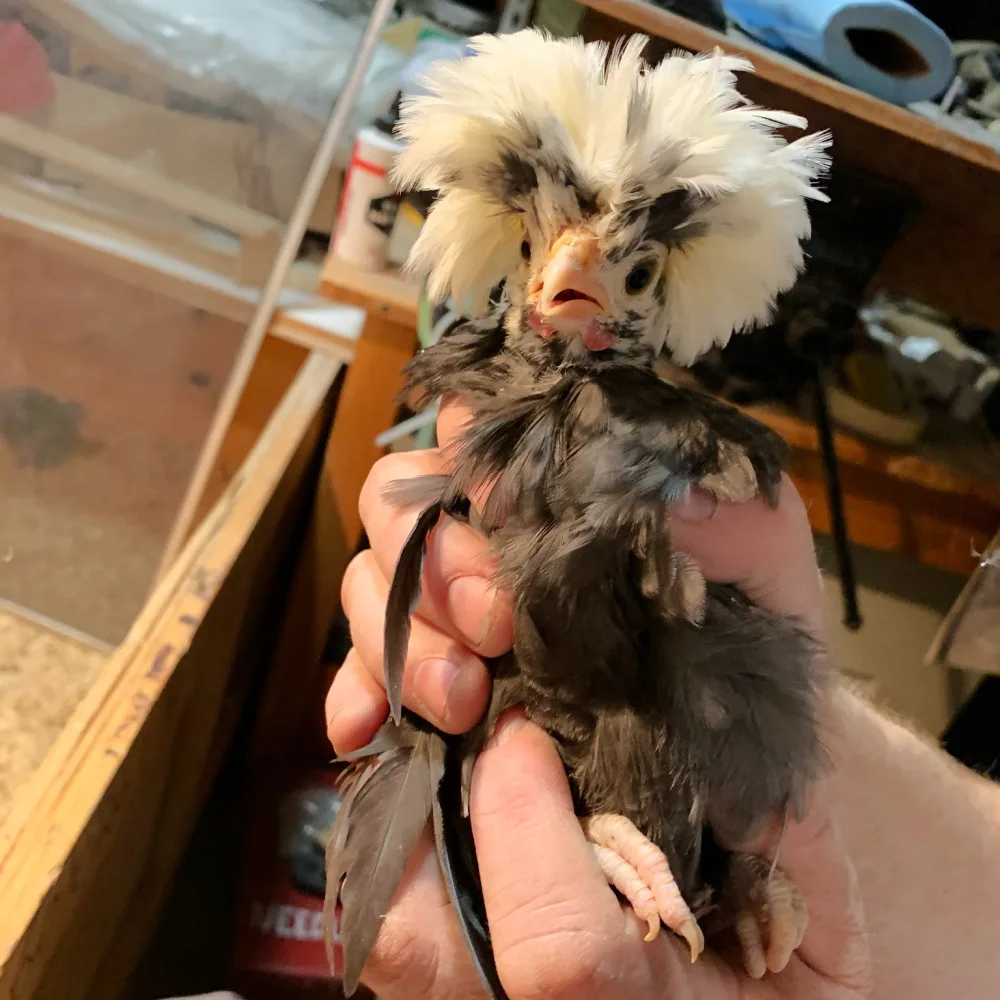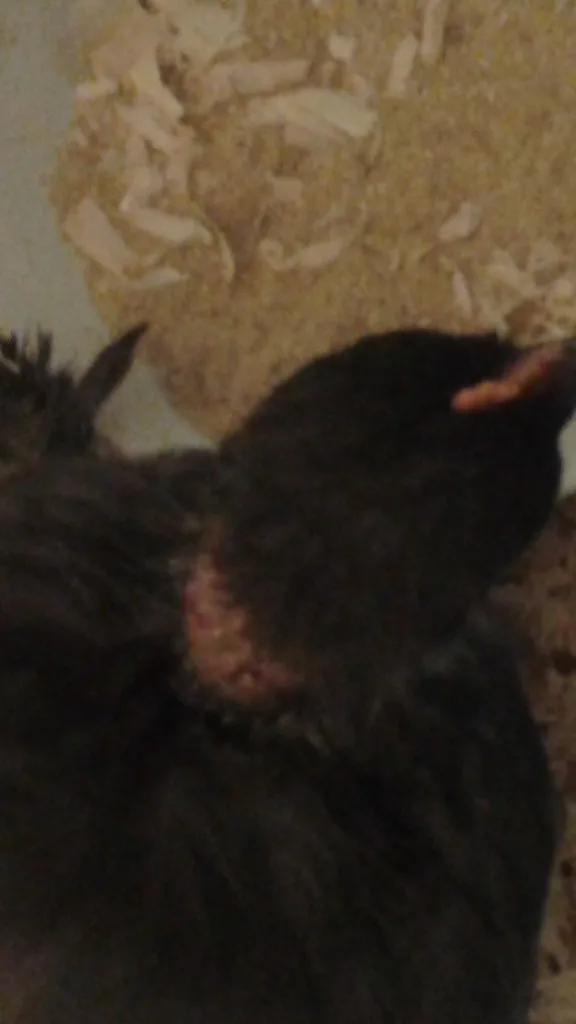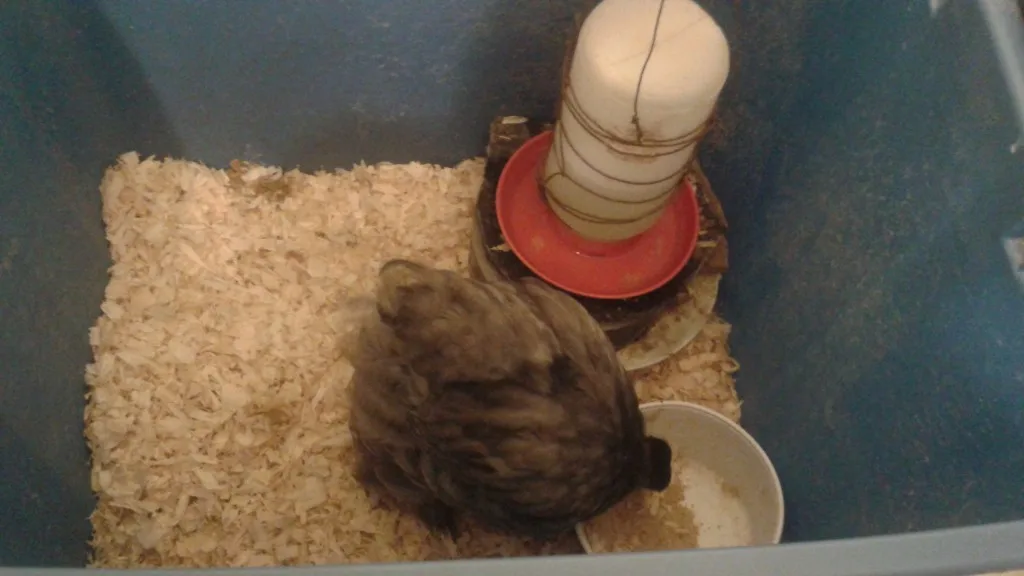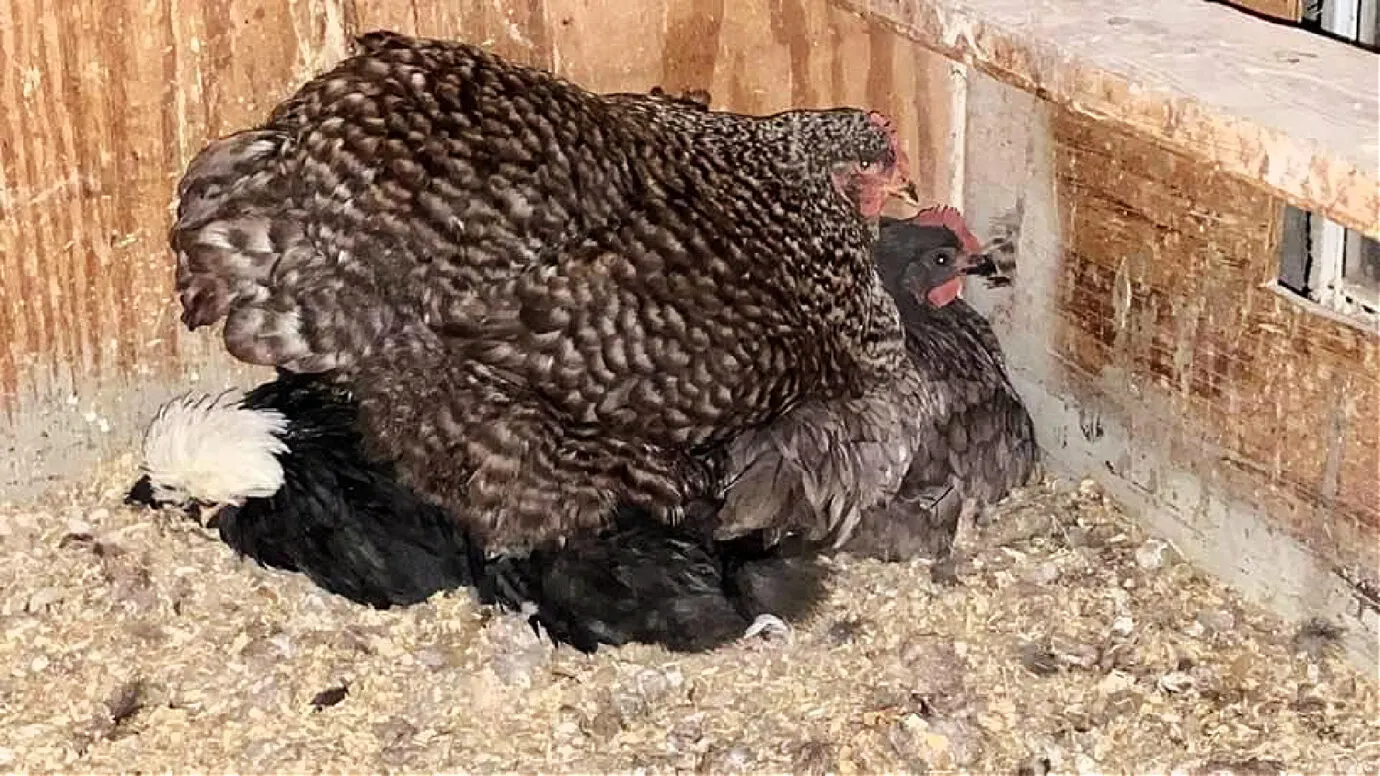We’ve had backyard chickens for about ten years. While raising chickens, we’ve learned something about problems integrating chickens into the flock over the years. If any of you are newbie chicken owners, this information will be helpful to you!
Like I said, when integrating new young chickens into the flock, there can be some hiccups. The first time we tried integrating new chickens into our flock back in 2014, we learned about those potential hiccups the hard way.

This post contains ads.
Problems Introducing New Chickens to a Flock
The first time we integrated a few chickens into an existing flock (years ago), it didn’t go so well. One of our new chickens (who had earned her place as my new favorite), Jemima, was pecked by the older hens.
She was a bit wounded, so we had to bring her to “hen hospital” (a crate in the bathtub!) to receive 24 hour nursing care. Poor Jemima 🙁

This was Jemima at our makeshift hen hospital.

After Jemima’s little incident getting pecked, we learned to keep the younger chickens in a separate area as a precaution.
Introducing New Chickens to a Flock
Of course, you don’t remove the younger chickens from their brooder and take them to the outdoors to the chicken coop until their feathers have come in fully. Also, it needs to be warm outside.
The way that we start introducing the younger chickens into our flock now allows the older chickens to see the younger chickens, but they can’t get at them to peck them. It’s very simple:
We put the young chickens in a dog kennel (with bedding, food, and water) that is placed inside the chicken run.

This way, the older and younger chickens can check each other out, but the metal door grate creates a barrier between them. Once they are used to each other, we gradually let the younger chickens wander in the chicken run for longer and longer periods of time (supervised) until we are sure the older chickens won’t bother them. Once the older chickens are safe for the young chickens to be around, then they start staying in the chicken coop itself!
Psst…if you are looking for a chicken coop of your own, click the chicken coop photo below!
Chicken Injury
When a chicken is wounded, it’s a good idea to let them heal away from the other chickens because if the other chickens see flesh wounds, they will continue to peck at them.
Since Jemima had a wound we needed to care for, my husband went to Cal Ranch and got some Vetericyn spray to help the wound heal. The guy at the store recommended it…he said he had even used it on himself! You can click the image of the Vetericyn bottle below if you want more information!

Have any of you ever used this stuff? Vetericyn has worked pretty well for our chickens in terms of preventing infection. Having some on hand is a good idea in case you have any chickens get a little wounded during the integration process.
I’m curious…if you have chickens, what do you use to prevent infection when you have an injured chicken?
Here’s the good news. Sometimes, you get lucky and the older hens are broody and will keep your young chickens warm and cozy. Like a mama hen and her babies. We had that happen this year. These broody hens aren’t the mamas, but they are acting like mamas!

If you are thinking about getting backyard chickens or are new to having chickens, click here to learn 11 things you need to know before getting backyard chickens.
See you next time!
Deb

